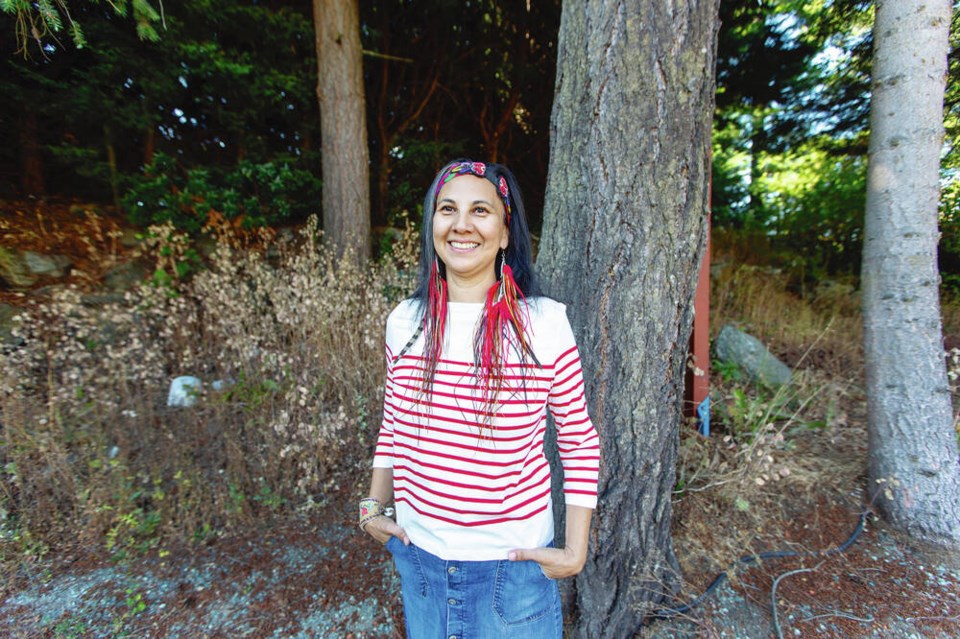Good news for the revitalization of Indigenous languages is tucked into new data released this month by Statistics Canada.
Data from the 2021 census suggest there may be fewer people in Canada who can speak an Indigenous language, but the number of younger people able to carry on a conversation in an Indigenous tongue is growing.
“It’s amazing. It fills my heart with immense light and joy when I see and hear young people speaking their language,” said Belinda Daniels, assistant professor of Indigenous education at the University of Victoria.
Daniels, who has devoted her career to the revitalization of Indigenous languages and founded the Nehiyawak Language Experience Cree-language camps, said she’s excited about the latest figures.
“I’m excited to see people are learning second Indigenous languages as adults, and I’m excited to see that the younger population have opportunities now to go to school and learn language,” she said.
“There’s definitely been a resurgence in young people, there’s a reclamation like a revolution among young people who are craving and hungry for knowing who they are and where they come from and how they’re tied to the land through the language.”
The census data showed 243,000 people in Canada reported being able to speak an Indigenous language, a drop from 2016, when that figure was around 251,000.
However, in Greater Victoria, the number of people who reported being able to speak an Indigenous language was 775, an increase from 715 in 2016.
The census data also showed more people report being able to speak an Indigenous language than those who report having one as a mother tongue, which suggests people are learning Indigenous languages.
In Greater Victoria, just 200 people reported Indigenous languages as their mother tongue, while 775 reported being able to speak the language.
Between 2016 and 2021, the number of children across the country age eight or younger who could speak an Indigenous language grew from 11,715 to 28,755.
However, Statistics Canada and language revitalization expert Onowa McIvor both caution the numbers have to be taken with a grain of salt.
Statistics Canada noted census data was not collected from 63 First Nations reserves and other communities for a number of reasons, including many not providing permission for the agency to enter.
“There’s always been a tension with Indigenous people and the census process and I think that’s actually a growing tension rather than a reducing tension — some communities participate and are willing and others don’t,” said McIvor, professor of Indigenous education at the University of Victoria.
She said the pandemic added a new level of complexity in reaching many communities to collect information.
McIvor, who holds a President’s Chair for Research in Indigenous language revitalization, said because the statistics don’t include data from several communities, there’s every chance thousands more people are able to speak the languages, as many communities across the country are making great strides in keeping them alive.
“When it comes to Indigenous language revitalization, Indigenous communities have been doing this work for 50 plus years. It’s not new to us,” she said. “But because there’s greater societal attention, it frees up more political attention and therefore more funds. So that does create greater possibilities.”
Investments in language revitalization paying off
Aliana Parker, language program manager at the First People’s Cultural Council, said the census results mirror its own research — the council publishes a report every four years on the status of Indigenous languages.
“We saw in 2018 [the last report] that continued decline of the number of first language speakers, people who learned it as a mother tongue, but there was an increase, a really positive increase, in the number of people who are learning it and gaining proficiency as a second language or additional language,” she said.
“I think that speaks really clearly to the impact of the investment made over recent years in supporting Indigenous languages.”
She said government funding and the programs established and developed by Indigenous communities themselves to reclaim languages are paying off. She noted some First Nations schools are now offering immersion education in Indigenous languages.
“Indigenous languages are really a critical foundation for culture and spirituality and identity and connection to land, and connection to history,” she said, adding being able to speak the language is a human right.
Parker said the road to revitalization is a long one and in many cases, communities are in the early stages.
“These languages have been under oppression for well over 150 years, so we can’t expect to see a turnaround in just a handful of years,” she said.
The cultural council estimates it would cost $2 million for any community to run a full suite of language revitalization projects and programs, which includes curriculum development and resource creation.
Parker credited senior governments for their commitments so far. The federal government passed the Indigenous Languages Act to support the revitalization of the languages and B.C. recently provided $35 million in new funding to support First Nations languages, on top of the $50 million it committed in 2018 to address the language crisis.
But she said there’s always room for more.
“It’s not just funding, but also policy is needed to make sure that this work can happen, that Indigenous people can lead and direct the decision-making processes around their languages and can lead this work,” Parker said.
Daniels said languages are directly connected to Indigenous identity.
“The way we educate, the way we walk on the earth, our culture and our heritage is attached to our languages and attached to our lands and this is how we have an identity,” she said.
“The Canadian government spent millions to eradicate Indigenous languages, so it would be nice if they spent the [equivalent of those] dollars to bring them back.”



